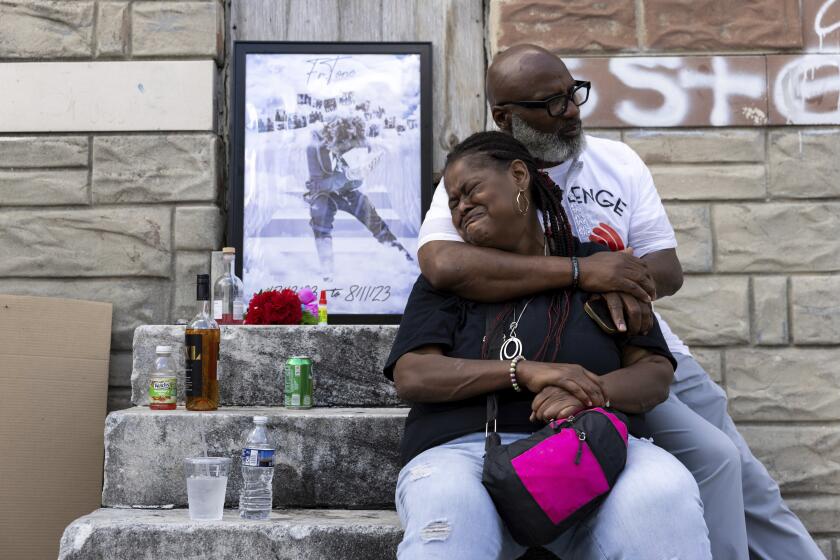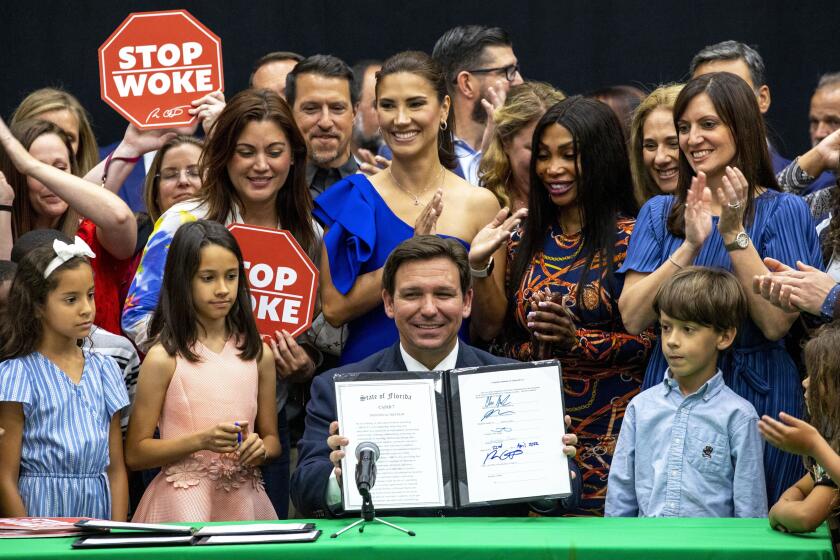Key Leaders Among Iraq’s Shiite Muslims
The Muslim world is divided into two principal groups. There are about 112 million Shiites among the 1.2 billion Muslims. The vast majority of Muslims are Sunnis.
There are differences between the groups in ritual and political organization, but the main division is over the Shiite belief that Imam Ali was the legitimate successor to the prophet Muhammad. Najaf is considered Ali’s burial site.
About 60% of Iraq’s population is Shiite. Among the most prominent figures:
Grand Ayatollah
Ali Sistani
The most senior Shiite cleric in Iraq, he heads the Hawza, the historic center of learning in Najaf that produces clerics serving throughout the Shiite world. Hawza leadership has traditionally avoided claiming direct political power.
The 72-year-old Sistani has rejected “foreign rule” but urged followers not to interfere with U.S. forces. He says he will accept whatever “form of government that the Iraqi people approve of.”
The grand ayatollah was thrown into the thick of Shiite tensions the day after Saddam Hussein’s ouster.
Close associate and prominent cleric Abdel Majid Khoei was killed April 10 by a mob at the tomb of Imam Ali in Najaf. Khoei had just returned from exile in London and was calling for reconciliation among Shiites.
Several days later, a crowd surrounded Sistani’s Najaf home demanding that he leave Iraq. Sistani has since refused to leave his house. Supporters flocked to Najaf to help protect him.
*
Ayatollah Mohammed
Saeed Hakim
The uncle of Ayatollah Mohammed Bakr Hakim, who was killed Friday, and a leading cleric in his own right. Unidentified assailants tried to kill him Aug. 24, placing a bomb outside his house in Najaf. The explosion killed three guards and wounded a number of relatives. He suffered cuts to his neck.
Known for opposing Hussein, he was placed under house arrest during the regime’s final days. Iraqi newspapers reported last week that Hakim had received threats against his life.
*
Grand Ayatollah
Mohammed Ishaq Fayed
A leading figure in Najaf. Born in Afghanistan but immigrated to Iraq at an early age. Studied under one of Iraq’s most prominent clerics.
*
Muqtader Sadr
He is the son of Sistani’s predecessor, Mohammed Sadeq Sadr, who was killed by Hussein’s regime in 1999 and is now revered as a martyr.
Witnesses said followers of Muqtader Sadr were behind Khoei’s slaying in April and the siege of Sistani’s house. Sadr has insisted that he has no dispute with Sistani, according to Arab newspapers.
Though only in his 20s, Sadr enjoys a wide following because of his family name. Residents of Baghdad’s main Shiite neighborhood renamed it Sadr City after his father.
*
Ayatollah Sayed
Hadi Mudarrasi
Returned to Iraq in July after many years in exile. He was born in the holy city of Karbala, in central Iraq, and studied there until Hussein’s government began detaining Shiite clerics. He lives in Karbala.
--- UNPUBLISHED NOTE ---
In stories after April 9, 2004, Shiite cleric Muqtader Sadr is correctly referred to as Muqtada Sadr.
--- END NOTE ---
More to Read
Start your day right
Sign up for Essential California for news, features and recommendations from the L.A. Times and beyond in your inbox six days a week.
You may occasionally receive promotional content from the Los Angeles Times.






